Bhutan, a mystical kingdom nestled in the heart of the Himalayas, is often celebrated for its breathtaking landscapes, profound cultural heritage, and the unique philosophy of Gross National Happiness. Beyond its famed attractions like the Tiger's Nest Monastery and Punakha Dzong lies a treasure trove of Hidden Gems of Bhutan, waiting to be discovered by those yearning to venture off the beaten path. This enigmatic land is home to undiscovered places brimming with untouched natural beauty, secret destinations offering serene retreats, and remote areas that showcase the true essence of Bhutanese tranquility and spirituality. From the lesser-known temples echoing ancient lore to the hidden valleys cradling traditional villages, and from the unexplored Bhutanese cuisine to the vibrant, secret Bhutanese festivals, these hidden gems provide a deeper understanding and appreciation of Bhutan’s rich tapestry of life. Whether you're an avid trekker seeking the best unknown hikes or a culture enthusiast eager to immerse in Bhutan's hidden cultural experiences, the kingdom’s concealed wonders promise an unparalleled journey of discovery. Join Amen Bhutan Tours and Treks as we unveil the mystique of Bhutan’s less trodden paths, where every corner holds a story, every landscape a painting, and every encounter an everlasting memory.
Haa Valley
The Haa Valley in Bhutan, often celebrated for its untouched natural beauty and rich cultural heritage, offers a multitude of experiences. Here are the highlights of the Haa Valley, showcasing why it's considered a hidden gem:
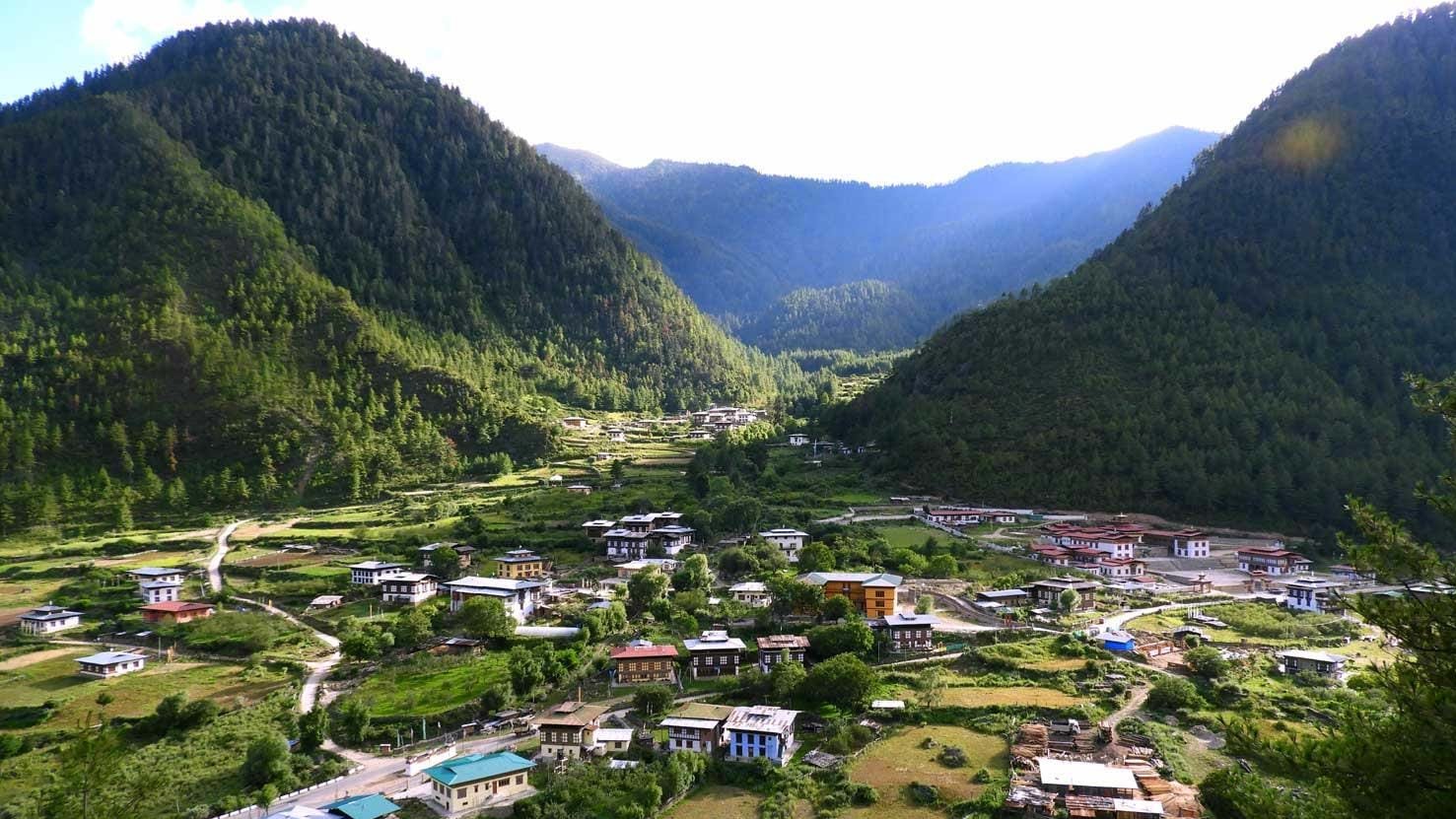
- Serene Beauty: Nestled within lush forests and alpine meadows, the valley is known for its tranquil atmosphere and picturesque landscapes, making it perfect for nature lovers and photographers.
- Traditional Lifestyle: Visitors have the unique opportunity to witness and experience the traditional Bhutanese way of life, unchanged for centuries, through homestays and interaction with local communities.
- White and Black Temples: The Haa Valley is home to the Lhakhang Karpo (White Temple) and Lhakhang Nagpo (Black Temple), both of which are significant for their historical and spiritual value.
- Annual Haa Summer Festival: Celebrate the rich cultural heritage of the nomadic herders of Haa during this festival, which showcases local traditions, sports, and cuisine.
- Hiking Trails: The valley offers numerous untouched hiking trails that lead through pristine forests and offer stunning views of the Himalayas, including routes to sacred lakes and secluded monasteries.
- Cuisine: Visitors can savor authentic Bhutanese dishes that are unique to the region, giving a taste of the valley's culinary diversity.
- Flora and Fauna: The Haa Valley's diverse ecosystem is home to a variety of wildlife and plant species, offering opportunities for bird watching and botanical explorations.
- Strategic Location: Close to the Indian border, the valley has a significant history with several ancient fortresses and military sites, adding a layer of historical intrigue.
- Isolation: Its relatively remote location means fewer tourists, allowing for a more intimate and authentic experience of Bhutanese culture and nature.
- Spiritual Retreats: The serene and sacred sites scattered across the valley provide spiritual solace and retreats for meditation and reflection, away from the bustle of everyday life.
Exploring the Haa Valley with Amen Bhutan Tours and Treks allows for an in-depth discovery of one of Bhutan's most serene and enchanting landscapes, rich in culture, history, and natural beauty.
Merak and Sakteng
The Merak and Sakteng regions in Eastern Bhutan are among the most unique and culturally rich areas of the kingdom, offering visitors a rare glimpse into the life of the semi-nomadic Brokpa people. Here are the highlights of these remote regions:

- Unique Culture: The Brokpa communities of Merak and Sakteng have maintained their unique semi-nomadic lifestyle, culture, and traditions for centuries, offering a fascinating insight into their way of life.
- Traditional Attire: The inhabitants are known for their distinctive clothing made from yak hair, including the colorful, hand-woven yak wool jackets that are both functional and symbolic.
- Semi-Nomadic Lifestyle: Visitors can learn about the Brokpas' sustainable living practices, including their seasonal migrations with yaks and sheep between highland and lowland pastures.
- Untouched Landscapes: The regions are characterized by beautiful, untouched landscapes, including verdant valleys, rugged mountains, and pristine forests, offering breathtaking views and photography opportunities.
- Unique Flora and Fauna: The area is rich in biodiversity, including rare and endangered species such as the red panda, which can be spotted in the dense bamboo forests.
- Sakteng Wildlife Sanctuary: This sanctuary, created to protect the mythical Yeti ('Migoi' in local lore), offers trekkers the chance to explore one of Bhutan's most biologically diverse areas.
- Festivals: The annual Brokpa festivals, such as the Merak Sakteng Tsechu, showcase unique dances, music, and cultural practices, providing an immersive cultural experience.
- Archery and Khuru: Witness the skill and passion for traditional sports like archery and dart throwing (khuru), which are integral parts of Brokpa culture and festivities.
- Spiritual Sites: Explore sacred sites and local monasteries that are central to the spiritual life of the Brokpa people, offering insights into their beliefs and practices.
- Isolation and Serenity: The remote location ensures a peaceful visit, far from the crowded tourist spots, allowing for a genuine connection with nature and local culture.
Exploring Merak and Sakteng offers an unparalleled opportunity to step back in time and experience the beauty of Bhutan's landscapes and the rich cultural heritage of its people.
Phobjikha Valley
Phobjikha Valley, often referred to as Gangtey Valley after the Gangtey Monastery, is one of Bhutan's most beautiful and serene spots, notable for its wide and flat valley bottom, unlike any other in Bhutan. Here are the highlights of Phobjikha Valley:

- Natural Beauty: The valley is renowned for its breathtaking landscapes, encompassing vast expanses of green fields surrounded by rolling hills and the backdrop of the imposing Himalayas.
- Black-Necked Cranes: Phobjikha is best known as the winter home of the rare and endangered black-necked cranes that migrate here from the Tibetan Plateau from late October to mid-February.
- Gangtey Monastery: Sitting atop a hill overlooking the valley, the 17th-century Gangtey Monastery is an important center of the Nyingmapa school of Buddhism and provides a serene spiritual atmosphere.
- Hiking Trails: Numerous trails meander through the valley and its surrounding hills, offering trekkers the chance to immerse themselves in the natural splendor and tranquility of the area.
- Conservation Efforts: The valley is a model of conservation, with efforts in place to preserve its natural environment and the habitat of the black-necked cranes, including eco-friendly tourism practices.
- Cultural Experiences: Visitors can engage with the local community, learn about Bhutanese rural life, and enjoy the warmth of Bhutanese hospitality through homestays and cultural exchanges.
- Annual Crane Festival: Celebrated in November, the Crane Festival marks the arrival of the black-necked cranes and is a time of joyous celebrations, traditional dances, and cultural performances.
- Photography: With its stunning landscapes and unique wildlife, Phobjikha Valley is a paradise for photographers looking to capture the essence of Bhutan's natural beauty.
- Peace and Serenity: The valley's remote location and pristine environment make it an ideal retreat for those seeking peace and solitude amidst nature.
- Sustainable Tourism: The community's commitment to sustainable and responsible tourism practices ensures that visitors can enjoy the valley's beauty without contributing to environmental degradation.
Phobjikha Valley's combination of natural splendor, rich culture, and conservation success stories make it a must-visit destination for anyone looking to experience the unique and untouched beauty of Bhutan.
Dongkola Temple
Dongkola Temple stands as a revered spiritual site, perched on a mountaintop offering panoramic views over the Paro valley in Bhutan. This sacred temple, often less frequented by tourists due to its remote location and the trek required to reach it, is a significant hidden gem for those seeking a profound cultural and spiritual experience. Here are the highlights of Dongkola Temple:
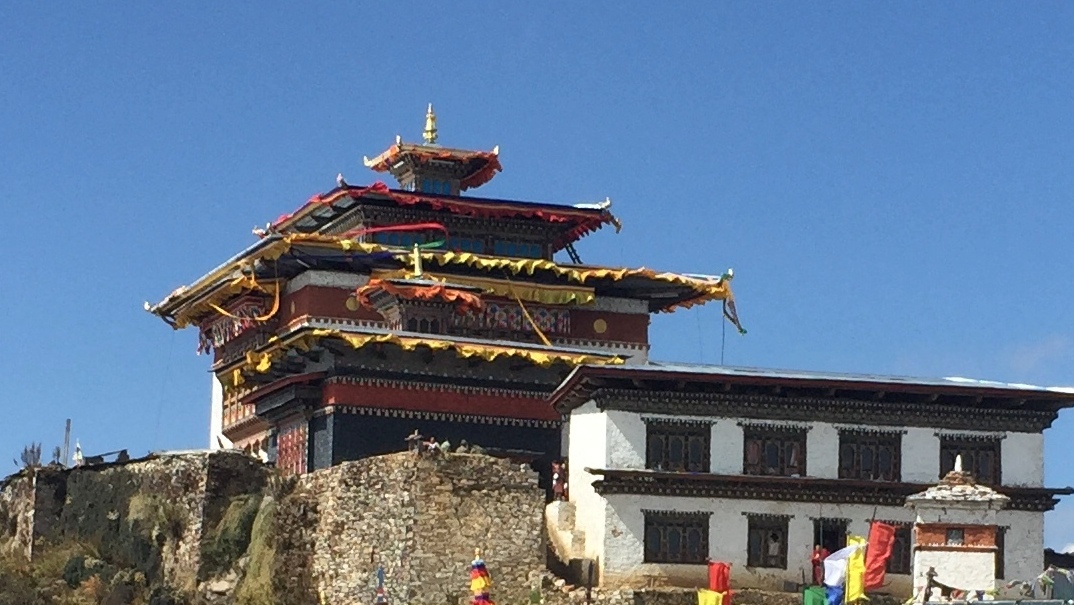
- Historical Significance: Believed to be one of the oldest temples in Bhutan, Dongkola Temple is rich in history and spiritual lore, offering insights into Bhutanese Buddhism and its ancient practices.
- Panoramic Views: The temple offers some of the most breathtaking views of the surrounding valleys and mountains, making the hike up an immensely rewarding experience.
- Spiritual Solitude: Its remote location ensures a peaceful and meditative environment, ideal for visitors seeking spiritual solace away from the bustle of tourist spots.
- Architectural Beauty: Dongkola Temple showcases traditional Bhutanese architecture, with intricate designs and religious artworks that reflect the kingdom's deep spiritual roots.
- Trekking Adventure: Reaching the temple involves a trek through beautiful landscapes, offering an adventurous journey through forests and hillsides dotted with prayer flags.
- Cultural Immersion: Visiting Dongkola provides a unique opportunity to immerse in local traditions and practices, including prayer and meditation sessions with the monks.
- Photography Opportunity: The temple and its surroundings offer stunning photographic opportunities, capturing the essence of Bhutan's spiritual and natural beauty.
- Local Festivals: The temple occasionally hosts local festivals and religious ceremonies, providing a glimpse into the spiritual life of the Bhutanese people and their devotion.
- Flora and Fauna: The trek to Dongkola Temple is also an opportunity to observe the rich biodiversity of the region, including a variety of bird species and indigenous plants.
- Heritage Preservation: The temple stands as a testament to Bhutan's efforts in preserving its cultural and spiritual heritage, offering an authentic experience of the kingdom's ancient traditions.
Dongkola Temple is a must-visit for those looking to delve deeper into Bhutan's spiritual heritage, offering a blend of adventure, tranquility, and cultural enrichment far from the well-trodden tourist paths.
Lhuentse
Lhuentse is one of the most scenic and culturally rich districts in Bhutan, located in the northeastern part of the country. It is renowned for its stunning landscapes, ancient temples, and as the ancestral home of Bhutan's royal family. Here are the highlights of Lhuentse, showcasing its significance and the wealth of experiences it offers:
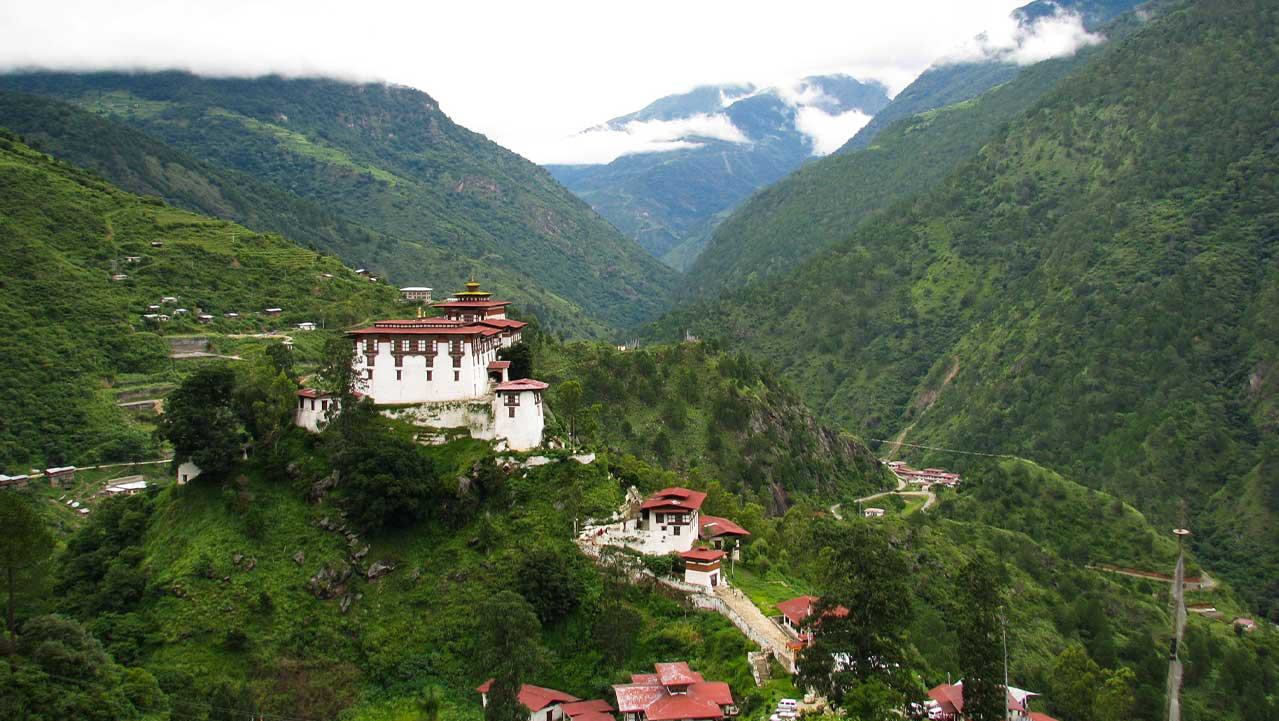
- Weaving Village: Lhuentse is famed for its intricate handwoven textiles, particularly silk kira (the traditional dress for Bhutanese women), which are considered among the best in Bhutan. The region's weaving tradition showcases exquisite patterns passed down through generations.
- Kurtoe Region: The ancestral home of Bhutan’s royal family, the Kurtoe region of Lhuentse, is steeped in history and offers visitors a glimpse into the noble lineage and its historic significance.
- Lhuentse Dzong: A majestic fortress that sits atop a hill overlooking the Kuri Chhu river. Lhuentse Dzong is an architectural marvel and serves as the administrative and religious center of the district.
- Remote and Serene: Its remote location ensures that Lhuentse remains one of the least visited but most beautiful regions in Bhutan, offering tranquility and a pristine environment.
- Sacred Sites: The district is dotted with ancient temples and sacred sites, including the Singye Dzong, which is considered one of the most important spiritual sites in Bhutan.
- Stunning Landscapes: Lhuentse boasts breathtaking landscapes, from lush valleys and steep cliffs to roaring rivers and serene forests, making it a paradise for nature lovers and photographers.
- Hiking and Trekking: The region offers several untouched trails for hiking and trekking, providing adventurers with the opportunity to explore its natural beauty and secluded monasteries.
- Rich Biodiversity: The diverse ecosystem of Lhuentse is home to a wide variety of flora and fauna, including rare and endangered species, offering opportunities for wildlife observation.
- Cultural Festivals: Lhuentse hosts vibrant local festivals, including the popular Lhuentse Tshechu, where visitors can experience traditional dances, music, and cultural practices unique to the region.
- Craftsmanship: Besides textiles, Lhuentse is known for its bamboo work, pottery, and other traditional crafts, reflecting the artistic heritage of the community.
Lhuentse presents a unique blend of natural beauty, deep-rooted culture, and spiritual significance, making it a must-visit destination for those looking to explore the rich tapestry of Bhutanese heritage and landscapes beyond the common tourist routes.
Jigme Dorji National Park
Jigme Dorji National Park is one of Bhutan's most significant conservation areas, named after the late Jigme Dorji Wangchuck, the Third King of Bhutan. Spanning over a vast area, it encompasses a range of ecosystems from subtropical forests to alpine meadows. Here are the highlights of Jigme Dorji National Park:
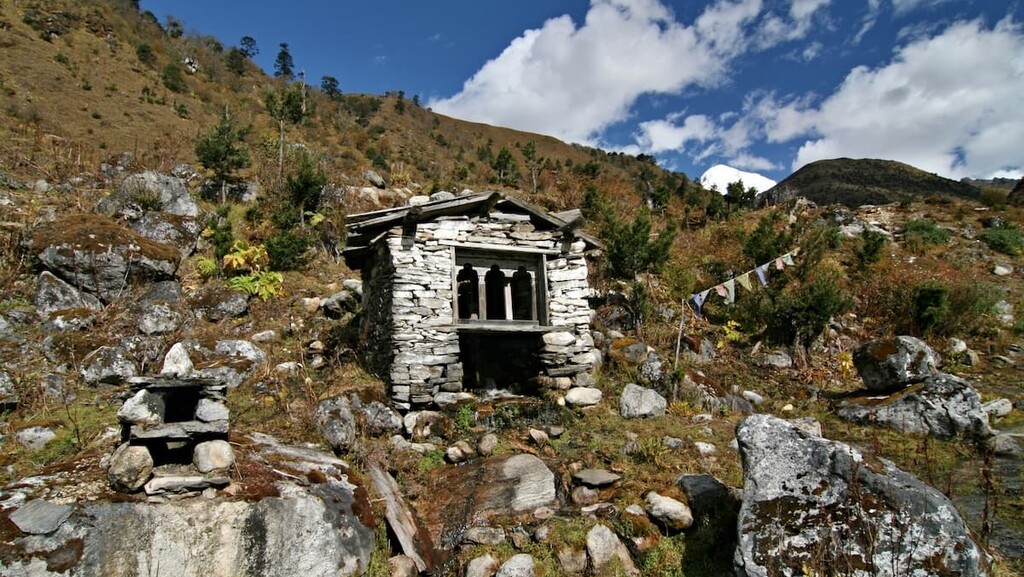
- Diverse Ecosystems: The park's varied altitudes, from as low as 1,400 meters to over 7,000 meters, support a rich diversity of habitats, including alpine, subalpine, and broadleaf forests.
- Rich Biodiversity: Home to an impressive array of wildlife, including several endangered species such as the snow leopard, takin (Bhutan's national animal), Bengal tiger, and the red panda.
- Stunning Landscapes: The park offers breathtaking natural landscapes, including high mountain peaks, pristine lakes, and glaciers. Notable among these is the Gasa Hot Springs and the sacred Mount Jomolhari.
- Cultural Significance: Several important cultural and historical sites within the park, including Lingshi Dzong and numerous ancient meditation caves, highlight Bhutan's spiritual heritage.
- Trekking and Adventure: It's a premier destination for trekking, with routes such as the Jomolhari Loop, Laya Gasa Trek, and the Snowman Trek, known as one of the world's most challenging treks.
- Flora and Fauna: The park is a haven for botanists and bird watchers, with its rich flora, including diverse medicinal plants, and over 300 species of birds.
- Conservation Efforts: Active conservation programs within the park focus on protecting its wildlife and natural resources, promoting sustainable tourism practices.
- Community Involvement: The park works closely with local communities to ensure conservation efforts are beneficial and sustainable, involving them in eco-tourism and conservation projects.
- Remote Villages: The park encompasses the highland communities of Laya and Lunana, offering insights into the lifestyles of Bhutan's nomadic herders.
- River Valleys: The park's river valleys, such as the Paro, Thimphu, and Punakha valleys, are integral to Bhutan's ecosystem, supporting both wildlife and human settlements.
Jigme Dorji National Park is a testament to Bhutan's commitment to preserving its natural heritage and offers an unparalleled experience for nature lovers, trekkers, and anyone interested in the conservation of one of the most biodiverse regions in the Himalayas.
Bumthang's Burning Lake (Membartsho)
Bumthang's Burning Lake (Membartsho) is one of Bhutan's most revered and mystical sites, located in the picturesque region of Bumthang, the cultural heartland of the kingdom. The lake is not a lake in the traditional sense but a serene pool along the Tang Chhu (river), known for its spiritual significance and the captivating legends that surround it. Here are the highlights of Bumthang's Burning Lake:
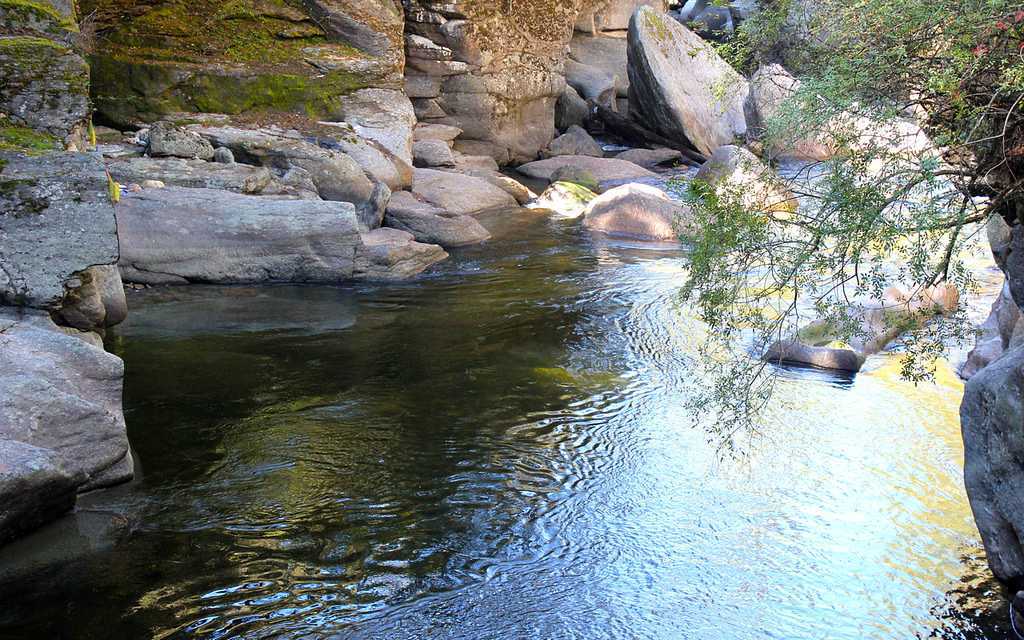
- Spiritual Significance: Membartsho is considered sacred due to its association with the treasure revealer, Terton Pema Lingpa, a significant figure in Bhutanese Buddhism, who is said to have discovered religious treasures from the lake in the 15th century.
- Historical Legend: According to legend, Pema Lingpa, guided by a vision, jumped into the lake with a burning lamp and emerged with treasures and the lamp still burning, hence the name "Burning Lake."
- Cultural Importance: The site is a pilgrimage destination for Bhutanese and international visitors, who come to pay homage and experience the spiritual energy of the place.
- Scenic Beauty: Surrounded by lush forests and steep cliffs, Membartsho is visually stunning, offering a tranquil and picturesque setting that captivates visitors.
- Accessible Location: Unlike many other spiritual sites in Bhutan, the Burning Lake is relatively accessible, located a short distance from the town of Jakar in Bumthang valley, making it an easy addition to any travel itinerary in the region.
- Ritual Offerings: Visitors often make offerings or light butter lamps at the site, following in the footsteps of pilgrims seeking blessings and spiritual fulfillment.
- Guided Tours: Knowledgeable local guides are available to explain the history, legends, and significance of Membartsho, enriching the visitor experience.
- Photography Spot: The serene waters, combined with the spiritual aura of the place, make Membartsho a compelling location for photography, capturing the essence of Bhutan's mystical landscape.
- Reflective Experience: The tranquility and spiritual atmosphere of Membartsho provide a perfect opportunity for reflection and meditation, away from the hustle and bustle of daily life.
- Cultural Festivals: Bumthang, known for its numerous temples and monasteries, hosts various religious festivals throughout the year, offering visitors a deeper insight into Bhutanese culture and spirituality during their visit to Membartsho.
Exploring Bumthang's Burning Lake offers a unique glimpse into the spiritual heritage and natural beauty of Bhutan, making it a must-visit for those seeking to experience the country's rich cultural tapestry.
Tshachus (Hot Springs)
Tshachus (Hot Springs) in Bhutan are natural mineral springs that hold significant cultural, medicinal, and spiritual value for the Bhutanese people. Nestled in various remote and scenic locations across the kingdom, these hot springs are not just a place for relaxation but also a pilgrimage for healing and spiritual cleansing. Here are the highlights of Bhutan's revered Tshachus:
.jpg)
- Medicinal Properties: The waters of the Tshachus are believed to have healing properties, capable of curing various ailments such as arthritis, skin diseases, and muscular disorders, thanks to the rich mineral content.
- Spiritual Significance: Bathing in the hot springs is considered a spiritual practice in Bhutan, offering purification and renewal of both body and spirit, in line with Buddhist beliefs.
- Scenic Locations: Most Tshachus are located in stunning natural settings surrounded by mountains and forests, providing a tranquil and beautiful environment for relaxation and meditation.
- Community Gathering Spots: Tshachus serve as important social gathering places for the local communities, where stories and news are shared, reinforcing social bonds.
- Eco-friendly Tourism: Visiting the hot springs encourages eco-friendly tourism practices, as these sites are often part of protected areas or national parks, promoting conservation and sustainable travel.
- Variety of Springs: Bhutan boasts several Tshachus, each with its own unique setting and properties, including the famous Gasa Tshachu in the north, known for its scenic beauty and healing waters, and the Dur Tshachu in Bumthang, located in the middle of a forest.
- Cultural Experiences: The journey to reach some of the Tshachus involves trekking through Bhutan's pristine landscapes, offering an opportunity to experience the country's rich flora and fauna and traditional villages along the way.
- Seasonal Visits: While Tshachus can be visited year-round, many locals and tourists prefer the cooler months, from October to February, for a warm respite from the cold weather.
- Integration with Traditional Medicine: The use of hot springs complements Bhutan's traditional medicine practices, which are an integral part of the nation's healthcare system.
- Festivals and Rituals: Some Tshachus are the site of annual festivals and rituals, adding a spiritual and cultural dimension to the healing experience.
Visiting the Tshachus in Bhutan offers a unique insight into the traditional lifestyle and beliefs of the Bhutanese people, providing visitors with a deeply rejuvenating experience that combines the therapeutic benefits of natural hot springs with the serene beauty of the Himalayan landscape.
Exploring the Hidden Gems of Bhutan offers a unique and intimate journey into the heart of a kingdom where ancient traditions, breathtaking landscapes, and spiritual sanctity intertwine. Beyond the well-trodden paths lie serene valleys, sacred sites, and vibrant communities that encapsulate the essence of Bhutanese heritage and natural beauty. These hidden gems not only provide a deeper understanding of Bhutan’s culture and traditions but also offer a tranquil refuge for the soul, making every discovery a cherished memory. Whether you're navigating the remote highlands, soaking in the medicinal hot springs, or participating in age-old festivals, the hidden gems of Bhutan promise an adventure that’s both enriching and enlightening, truly a testament to the Himalayan spirit.
FAQs on Hidden Gems of Bhutan
Q: What is considered a "hidden gem" in Bhutan?
A: A "hidden gem" in Bhutan refers to lesser-known, often remote or underexplored locations, cultural experiences, or natural wonders that offer unique insights into Bhutan's heritage, landscapes, and lifestyle, distinct from the more frequented tourist spots.
Q: How can I visit the remote areas of Bhutan, such as Merak and Sakteng?
A: Visiting remote areas like Merak and Sakteng requires planning and permission as part of a guided tour arranged through a registered Bhutanese tour operator. These areas often involve trekking, so adequate physical preparation and appropriate gear are essential.
Q: Are there any permits required to visit these hidden gems?
A: Yes, apart from the standard tourist visa, certain hidden gems, especially those in protected or border areas, may require additional permits. Your tour operator, such as a licensed Bhutanese travel company, can arrange these on your behalf.
Q: What is the best time of year to explore Bhutan's hidden gems?
A: The best time to explore Bhutan's hidden gems largely depends on the region and altitude. Generally, the spring (March to May) and autumn (September to November) months offer the most favorable weather for trekking and outdoor activities.
Q: Can I explore Bhutan's hidden gems independently?
A: Bhutanese regulations require all international tourists (except citizens of India, Bangladesh, and the Maldives) to travel with a registered tour operator. This ensures that visitors get the most out of their visit, with expert guidance and logistical support, especially important for accessing and appreciating hidden gems.
Q: What should I pack for a visit to Bhutan's hidden gems?
A: Packing should include layers for variable weather, sturdy hiking boots, a rain jacket, sun protection, a daypack, and any personal medication. Also, consider cultural sensitivity in your clothing choices when visiting religious sites.
Q: Are there any cultural considerations I should be aware of when visiting Bhutan's hidden gems?
A: Respect for local customs and traditions is paramount. This includes dressing modestly, especially at religious sites, asking permission before taking photographs of people, and showing respect for the environment and wildlife.
Q: How physically demanding is it to visit Bhutan's hidden gems?
A: The physical demand can vary widely depending on the location. While some hidden gems are accessible by vehicle or with a short walk, others, like certain monasteries or remote valleys, may require strenuous trekking over several days.
Q: What kind of wildlife might I see in Bhutan's national parks and remote areas?
A: Bhutan's protected areas are home to diverse wildlife, including snow leopards, takins, red pandas, and various bird species, including the black-necked crane. Wildlife sightings, however, can never be guaranteed.
Q: Is it safe to explore Bhutan's hidden gems?
A: Yes, with the guidance of experienced tour operators and adherence to safety advice and regulations, exploring Bhutan's hidden gems is generally safe. Bhutan is known for its welcoming people and its safe and secure environment for travelers.
If you are looking for tour packages in Bhutan please click here
If you need any further information, please contact us, Email: at [email protected] , Phone (Whatsapp or Viber) +975-1755-6636
